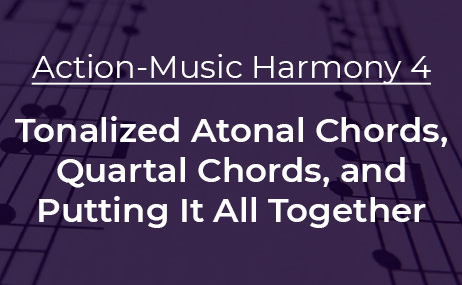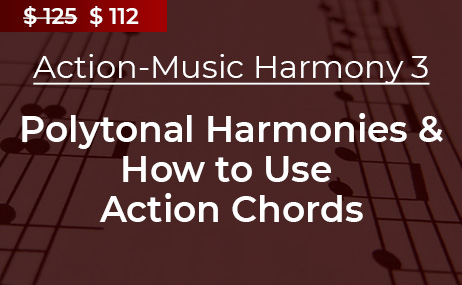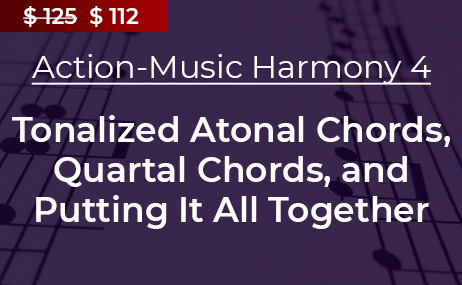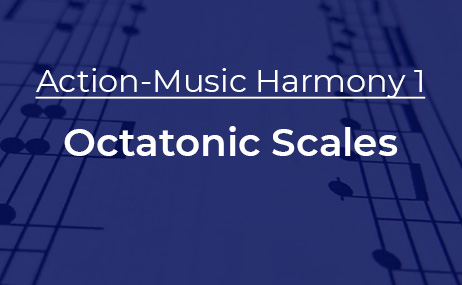Learn classic action music techniques for stretching out atonal chords by voicing them in more tonal ways. Understand how quartal chords can take on different expressive meanings through the melody they create. And discover how expressions in an action cue tend to be associated with certain types of action harmonies. We break down two complete classic action cues and watch a new action cue composed with harmonies from all four Action-Music Harmony courses.
The course comes with a comprehensive set of exercises to let you practice writing these chords and use them in the description of a complete action scene.
Action-Music Harmony 4 – Breakdown
Note: Lesson numbers continue from Action-Music Harmony 1, 2 and 3
Lesson 10 – Tonalizing Atonal Chords
- “Action-Tonic” Chords
- As a Dyad
- As 3-Note Chords
- As 4- or 5-Note Chords
- Mirroring Tonal Practices
- Separating a 3rd
- Resembling a Tonic Chord
- Organizing with a Diatonic Melody
- Extending Atonal Chords
- Breaking Up (0134) Chords
- Combining (0134) Chords
- Varying a Single Atonal Chord
Lesson 11 – Expressive Quartal Chords
- Perfect Quartal Chords and Their Re-Voicings
- Overview
- Strong, Powerful – Rising 4ths
- In Trouble – Falling 2nds
- Intensifying – Rising 2nds
- Varying Quartal Chords
- Imperfect Quartal Chords
- Gapped Quartal Chords and “Secundal Harmony”
- Augmented Triads in Action Music
- Overview
- Expressions of Augmented Triads
Lesson 12 – Putting It All Together
- Summarizing Action Harmony
- Harmony Types and Their Expressive Uses
- Melody and Accompaniment
- Action Cue Analyses
- Joining Sections with Similarities in Material
- Complete Cue 1
- Dyads of 3rds as the Basis of a Cue
- Complete Cue 2
- Composing an Action Cue
- Planning Material According to the Scene
- Cue, Section 1 – The Chase Begins
- Cue, Section 2 – Into the Cave
- Cue, Section 3 – Starting an Avalanche
Join Our Mailing List
Receive an email when a new course or blog post becomes available.
By subscribing, you agree with our Privacy Policy.




